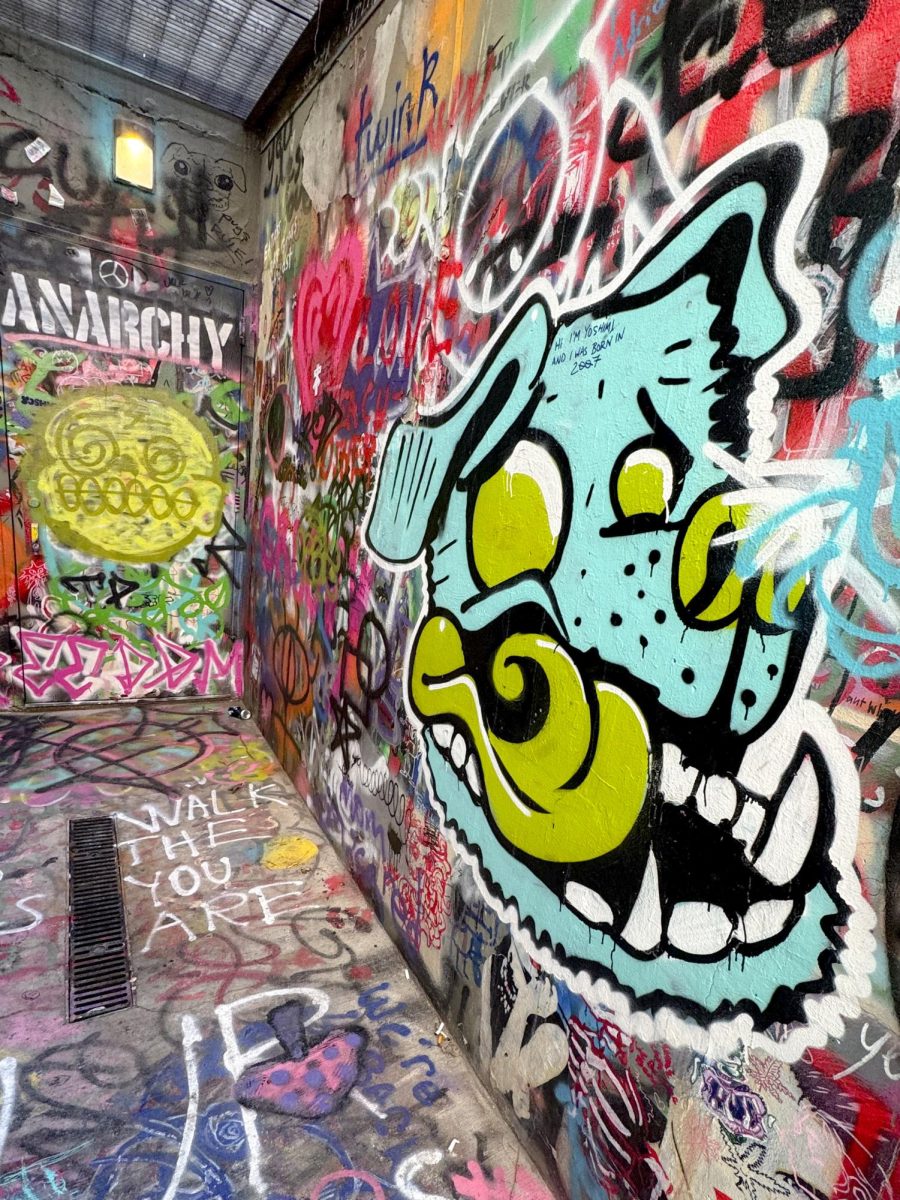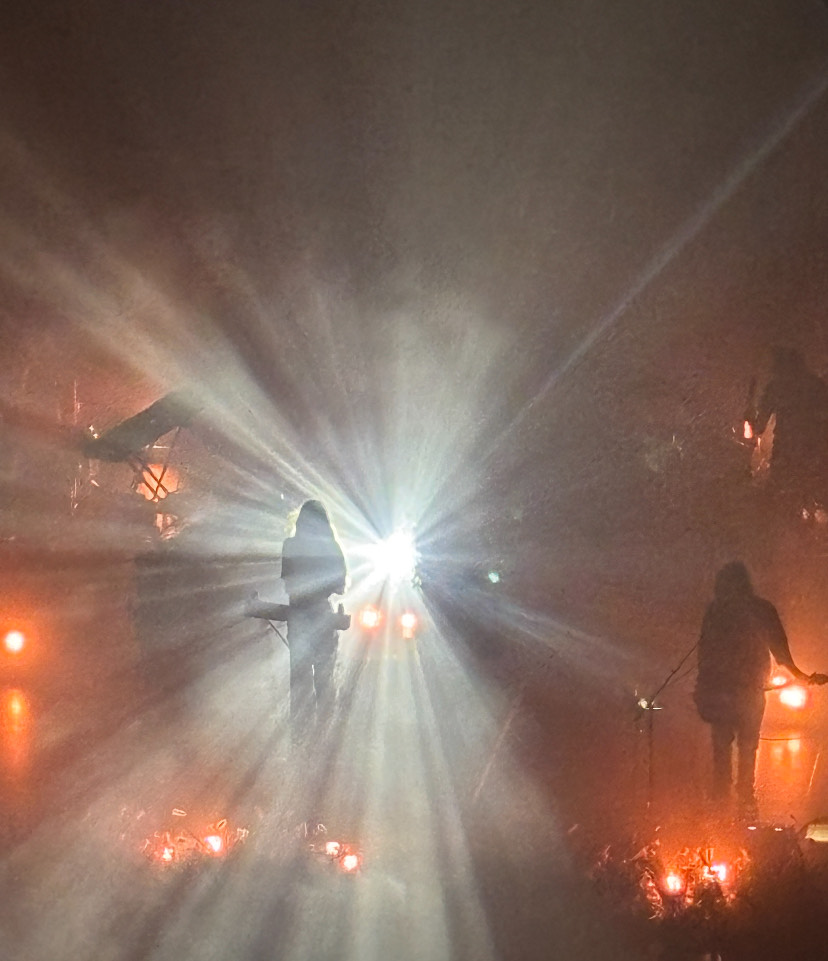Though often overshadowed by the WMCN studio graffiti in the same Doty-Wallace basement tunnels, the graffiti stairs outside Doty Hall remain a Rosetta Stone of Mac culture. Pick a random square foot of the stairwell, pore over it for a quarter of an hour, and come away from it a changed person with a new outlook on life. How many crude cartoon drawings, indie lyrics and now-defunct couples’ initial hearts are on these hallowed walls?
I first came across this area as a former resident of Doty Hall and a frequent traveler of the tunnels beneath it. I’ve been mesmerized by it ever since. Unlike the WMCN studio, which has its merits, this graffiti wall appears to be self-sustaining; it does not require routine clean-slate paint-overs because the sheer amount of nonsense serves as a sufficient base coat for all who wish to contribute.
Something had always nagged at me, though: how is this allowed? Obviously, I was grateful that it was– why else would I have written this love letter to it–but the rule-concerned pre-law side of myself was desperate to learn more. After asking my arts section peers about their thoughts, I was directed to Student Affairs, who then directed me to Facilities. However, the employee I emailed at Facilities informed me that the graffiti stairs pre-dated their time at Mac and that they were unaware of its history outside of its simple purpose of being a school-sanctioned canvas for students.
Back to the drawing board. Going down the list of Macalester faculty divisions, I then reached out to Building Maintenance, who ultimately directed me to the Library Archives. By some miracle, the archives graciously sent me three Mac Weekly articles from the late aughts that mentioned the stairs.
In these clippings, I found a treasure trove of knowledge. First, the graffiti on the wall became school-sanctioned in 2004, but its history before then remains uncertain. Second, the space, more officially known as the “Doty Grate,” was once a social epicenter for Mac students as recently as 2007. Many residents of the five adjacent dorms often complained about near-constant noise reverberating up the tall brick walls from the graffitied hole in the ground into odd hours of the night. It seemed that the grate’s central location between residential buildings and the warmth it provided made it the perfect place for Mac nightlife.
However, while fascinating, the grate’s value as a social space was not what spurred me to research it in the first place. It was–and this may come as a shock if you’ve forgotten what section of The Mac Weekly you’re currently reading–the art. An appreciation for the finer pieces of the space dates back to a 2007 Mac Weekly feature, where then-students discussed the bittersweet beauty of impressive art eventually being covered up–whether that be by another refined piece or instead by Garfield with a bikini (which I will neither confirm nor deny authorship of).
The latter option seems to be more common today, as students more often opt for Sharpie scribbles than spray can masterpieces. In an article from 2007, Robin Weiss ’10 noted, however, that resistance to change was antithetical to the medium of graffiti — to attempt to preserve certain pieces, in his words, was “to deny the nature of the beast.”
Sometimes, however, individuals contribute to the space in less-than-savory ways. All three past Mac Weekly articles lament that offensive, insensitive and even hateful graffiti has found its way onto the wall. This obviously threatened the existence of the wall, but it also diminished its ability to serve as a vessel for student expression and community-building.
If given the freedom to do anything, what do people do? The Doty Grate seems to answer this question in a very Mac way: it depends. Where is the line drawn between a contribution that makes a student feel welcome and part of a greater community and a contribution that has the opposite effect? Hateful art and words clearly have absolutely no place in the stairway, but what about mindless doodles, especially those that cover up art that clearly took a lot of effort to create? Is there a greater value in pretty art than in a spur-of-the-moment scrawl?
Ultimately, I suspect that I was so drawn to the graffiti grate because it confirmed that I had made the right choice in choosing to attend Macalester College. I was overjoyed that I had found a place that not only allowed such a thing to exist but that also had a student body that set its existence into motion. I think back to the words of Weiss and remember that there is some joy and wonder to be found in a drawing of a caterpillar with many, many legs, complete with little shoes and a top-hat.
Is there a possibility, though, that the stagnation of the space as a thriving, breathing community art piece has much to do with its declining popularity as a social venue? Have students gravitated away from the space–perhaps opting instead for the Median on Summit Ave. – and, through a lack of connection to this once-epicentral grate, have left it a shell of its former self? Though in many ways a spiritual successor, the Median lacks the artistic flair of the stairwell.
I encourage curious readers to seek out the Doty Grate and take some time to find something that speaks to you, whether that be an Elliott Smith lyric, a cheesy pun or a rant about the state of modern feminism. Bring a Sharpie (or, better yet, a spray paint can, paintbrush, paint-pen–who cares, it’s graffiti). Add something that you want another person to see. Someday, sometime, someone will. Take care in adding something that will encourage them, too, to join in maintaining the collective, living art of the Doty Grate.












